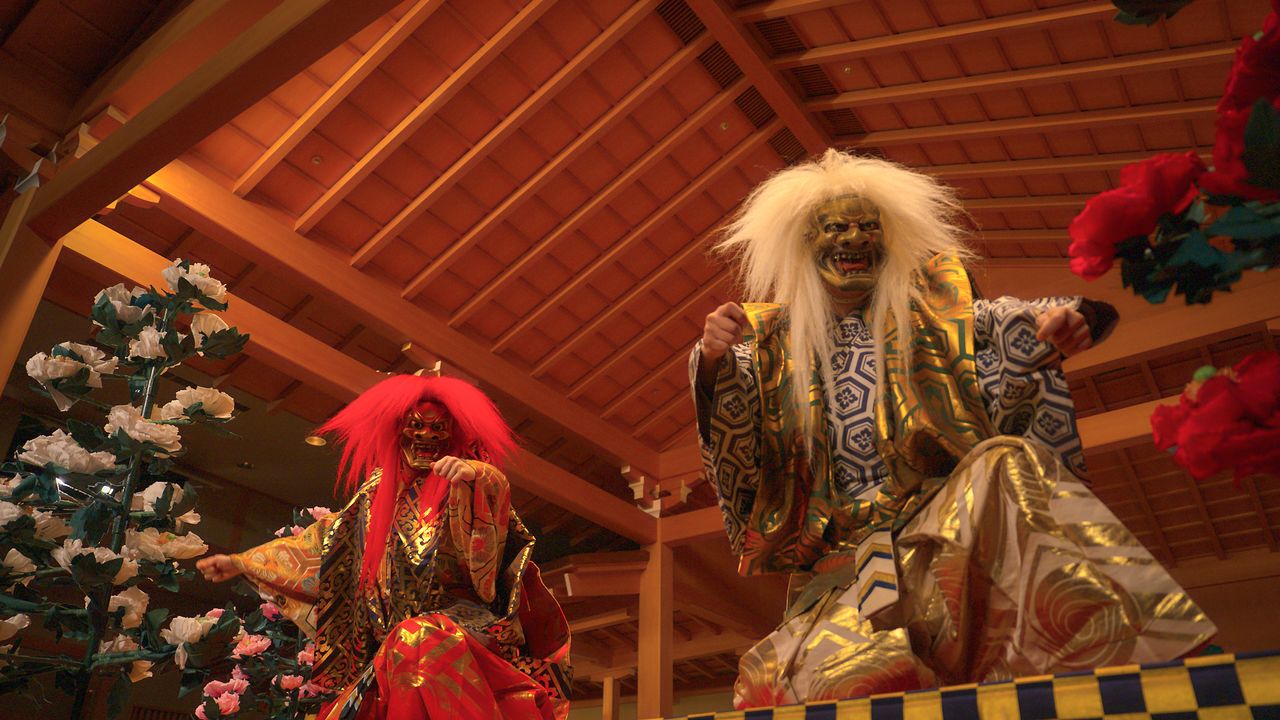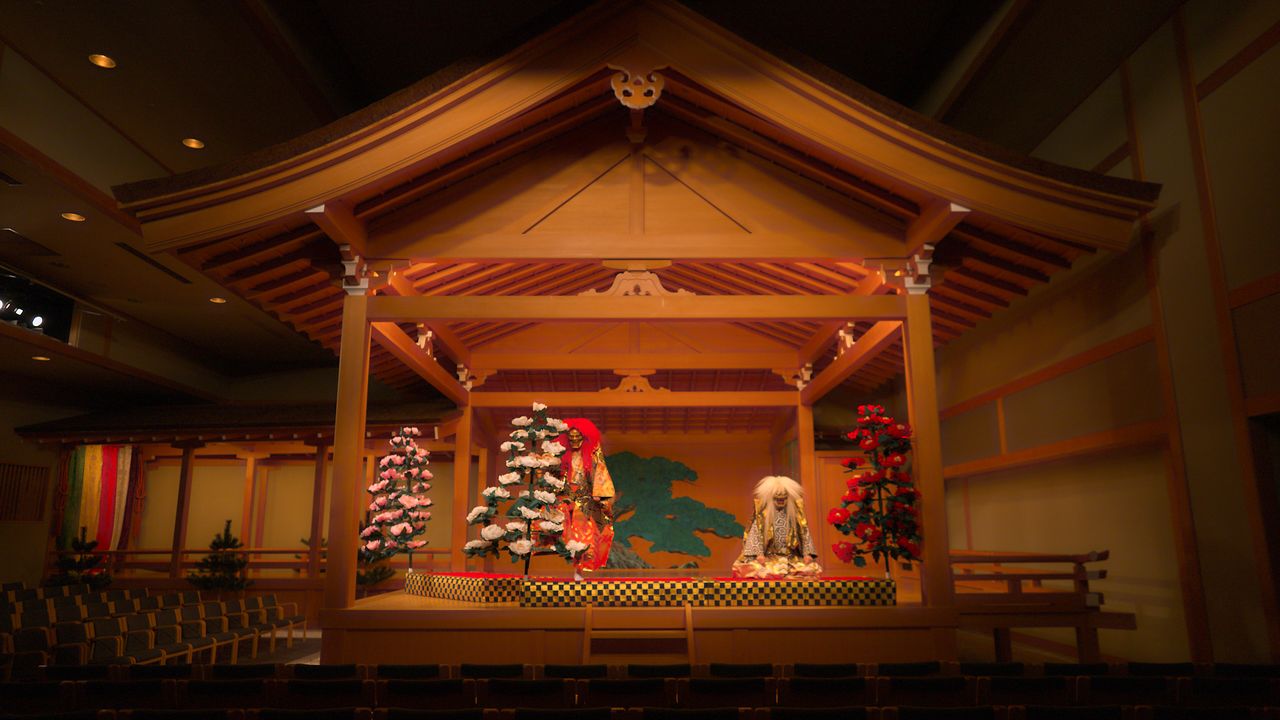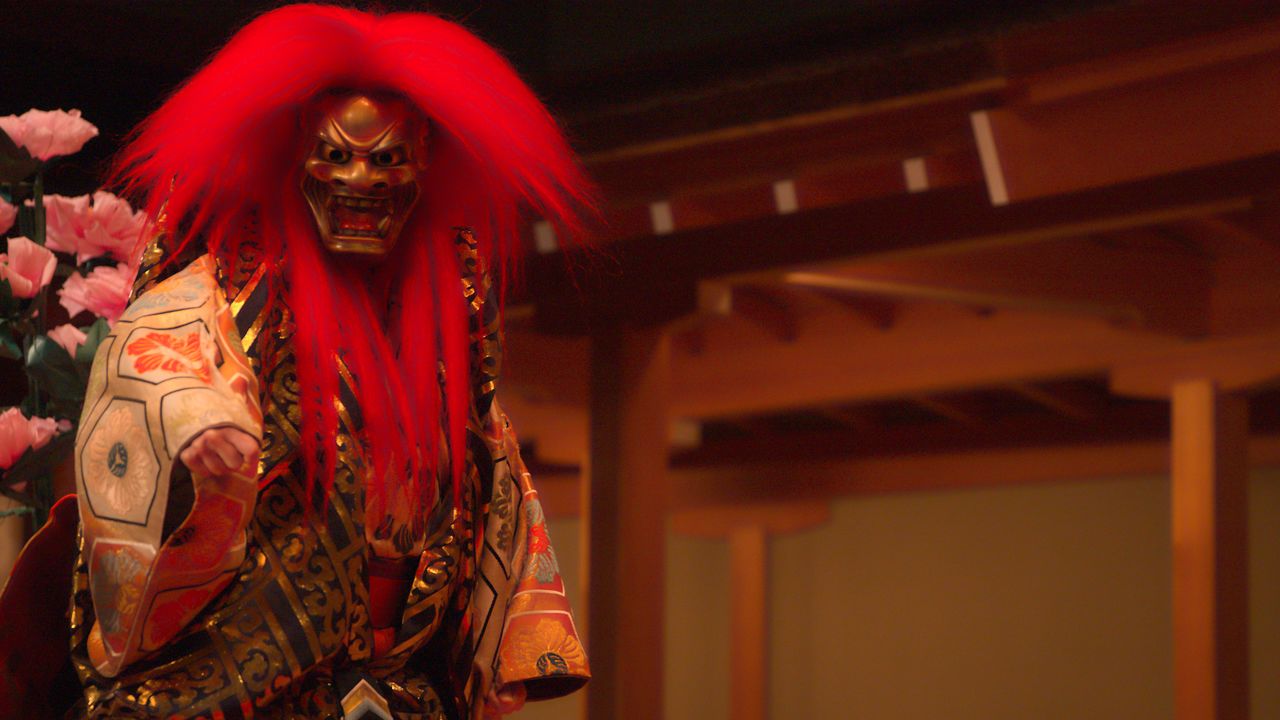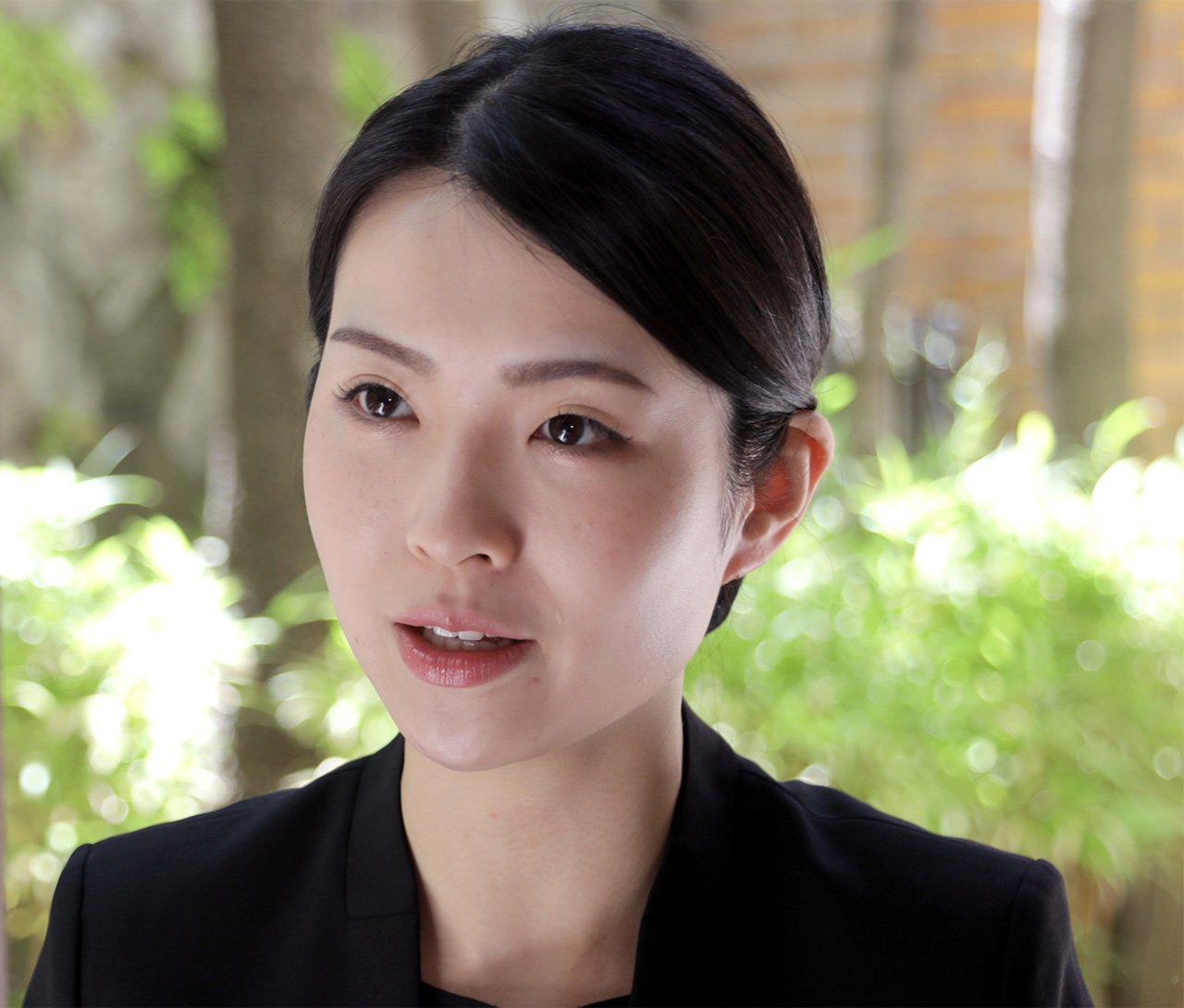
“Cool Traditions” Stay in Tune with Modern Life
An Auspicious Nō Dance for a New Year: Takeda Isa and Her Father Perform Together
JapanIn video
Culture Entertainment History Art- English
- 日本語
- 简体字
- 繁體字
- Français
- Español
- العربية
- Русский
The nō is composite artform: As well as the drama acted out on the stage, it incorporates dance and music, as well as the elaborate and often stunningly beautiful costumes and masks worn by the main actors. The mai or dance in particular is considered a key element, as important if not more so than the chanted text. Nō actors often talk of performing a piece as nō o mau, or “dancing” a nō piece. Unlike other forms of dance, which enact specific actions or activities, nō is an art of subtraction, stripped of all unnecessary explanatory elements. Shakkyō, or “Stone Bridge,” is one of the more accessible pieces in the repertoire, famous for its exuberant dance, performed by two sacred lions. It is an ideal introduction for a novice like me to the allure and beauty of this ancient artform.
A Stone Bridge to a Sacred Pure Land
Like many nō plays, Shakkyō opens with a traveling Buddhist priest—in this case the monk Jakushō, who is on a pilgrimage to holy places in China and India. When the play opens, he has just arrived at the “Stone Bridge” of the title, in front of the mystic mountain of Shōryōzen (another name for Mount Wutai in Shaanxi Province, China). Clouds cloak the surroundings, obscuring the path along which Jakushō has just come. The sound of a white river raging through the gorge far below comes to him like the sound of storming rain. He has left the everyday world and entered the realm of the numinous. An old man appears, and Jakushō asks him about the place.
“I am a Buddhist priest, come from India. Is this the famous Stone Bridge I have heard so much about?”
“It is indeed. And beyond the bridge lies the Pure Land of Manjushri, the Bodhisattva of Wisdom.”
“Then I will entrust my fate to the Buddhas and cross the bridge,” says Jakushō.
“Wait a moment,” warns the man. “In ancient times, even monks of great wisdom and holiness only crossed the bridge after devoting themselves to rigorous ascetic training. Don’t think you can cross easily just because you have accumulated a little spiritual power.”
The priest starts to understand that this is no ordinary bridge.
“The bridge is less than a foot wide,” the old man goes on, “and slippery with moss. Below stretches a valley of hell, unfathomably deep. No practitioner can cross unless his heart is pure and totally dedicated to the teachings.”
And there is more:
“This bridge was not made by human hand. It appeared naturally and the stone stretched itself out to the opposite side of the ravine. It soars above the clouds, like a rainbow arcing across the sky on an evening after rain, bending like a tight-stretched bow. Without the protection of the Buddhas, who can hope to cross this bridge? On the other side lies the Pure Land of the Bodhisattva Manjushri, where flowers fall eternally, and ceaseless music sounds from among the clouds. Wait a while here and you will surely be vouchsafed a miraculous sign of Manjushri’s infinite wisdom and mercy.”
And with that, the mysterious old man vanishes from the scene.
Jakushō waits, and from the other side of the bridge appear a pair of red and white lions. The messengers of Manjushri enter the stage to the stately, intoxicating rhythms of the hayashi musicians. The lions play with fragrant peony blossoms, and for the next ten minutes or so perform a relentlessly energetic, constantly shifting dance. Then, with auspicious wishes for long life, they return to the Pure Land of the Bodhisattva.

The lion dance section of Shakkyō (The Stone Bridge). (© Otome Kaita)
The Lion Dance
The opening “act” or maeba of Shakkyō is quite static, consisting largely of the dialogue between the traveling priest and the old man as they discuss the otherworldly bridge, uncrossable except by those with deep training in the ascetic arts. But in the second half of the play, or nochiba, as soon as the lions appear, we are plunged into the world of dynamism and movement. It is this second half that is the focus of most of the interest of the play.
The sacred lions perform an exuberant, transcendent dance that includes elements unique to this piece. The dancers stomp their feet and roll their heads, shaking their red and white hair with abandon, their arms outstretched. Audiences are transported by the sight of the two lions as they leap from one end of the stage to the other. Shakkyō makes extraordinary technical and psychological demands on actors, who need special approval from the head of their nō school before they are allowed to perform this special piece. For this performance, the parts of the two lions who inhabit the mystic mountains and valleys are danced by Takeda Takashi and his daughter, Isa. As well as father and child, the two are also teacher and pupil. The dance of the white-haired father lion seems to express the august dignity of these sacred beasts. The movements of the younger red-haired lion are brisker, more youthful and fleet-footed. It is the perfect showpiece for the skills of this two-generation team of dancers from the same family.
From its first appearance on the hashigakari bridge that leads onto the stage, the red lion moves crisply and sharply, hopping up onto the Stone Bridge only to leap down again instantly, taking off in a flurry of movements that make the stage seem barely wide enough to contain the energy of the dance. The second half of the play is all about light and movement: a dramatic contrast from the static tranquility of the first half. Even a novice like me is swept up in the action. I feel my emotions stirred by the insistent pulse and rhythm of the music and the dizzying flurry of movement across the stage.

The dancing red lion. (© Otome Kaita)
The dance and the drumming eventually abate, and and we return to stillness.
An Art of Abstraction and Freedom of Interpretation
The text of Shakkyō uses the phrase 光陰 kōin (light and shade, sun and moon) to refer to the passage of time—a reminder that nō is an artform concerned above all with the shifting changes brought about by time. Buddhist training too is about the accumulation of time—perhaps this is the message that the sacred lions want to convey to Jakushō in his dreamlike state of intoxicated reverie. I asked Isa for her thoughts on the piece.
“Audiences are free to interpret a piece in any way they like. That is one of the pleasures of nō. Everything is left to the imagination of the audience. Every person watching has their own interpretations, their own ways of enjoying what they see. What relationship exists between the two lions? What are they thinking? I think perhaps it is these blank spaces, and the room they leave for interpretation, that have allowed nō to survive and flourish, cherished by so many people and handed down as one of the traditional performing arts of Japan for nearly 700 years.”

Nō actor Takeda Isa. (© Nagasaka Yoshiki)
It is easy to see what she means. Nō is one of the most abstract of all the world’s artforms. Audiences are free to let the various elements of the performance—dance, poetry, costumes, and music—play over them and speak freely to their imaginations. Will Jakushō ultimately succeed in crossing the Stone Bridge? This question is left to individual audience members to decide for themselves.
White lion: Takeda Takashi
Red lion: Takeda Isa
Flute: Fujita Takahiro
Kotsuzumi (shoulder drum): Sowa Masahiro
Ōtsuzumi (hip drum): Tsukuda Yoshikatsu
Taiko drum: Konparu Sōemon
Video: Otome Kaita
Text: Yoshimura Nobuhiko
Sound recording: Kitahara Yoshiaki
(Originally published in Japanese. Banner photo: The lion dance, performed by father-and-daughter combination Ikeda Takashi, the white lion, and Isa, the red. © Otome Kaita.)
